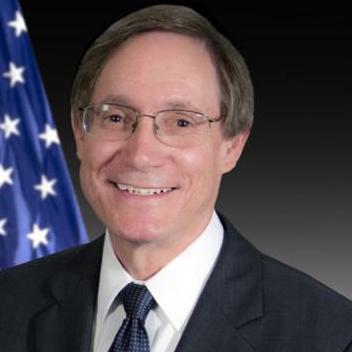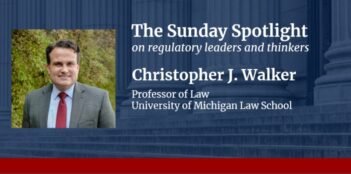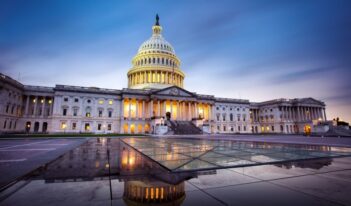
Concerns about runaway regulatory costs are overblown.
I have truly enjoyed sharing different perspectives on regulation with my U.S. Consumer Product Safety Commission (CPSC) colleague, Commissioner Joe Mohorovic. He has always approached important policy issues with wit and insight—and occasional barbs (none ever taken personally). In that spirit, I offer a brief response to his latest comments on regulatory reform.
As a starting point, I note something that I admire about my colleague. He is not a knee-jerk opponent of regulation. He and I certainly part company on a number of regulations proposed and issued by the CPSC, but he has shown a willingness to support rules that protect the public and pass his test for cost-effectiveness. And, for what it is worth, I share his concern about not promulgating rules where the benefits fail to match the costs.
That said, I do not share my colleague’s sense that the regulatory state has run amok, particularly at the CPSC. If anything, we have found our rulemaking stymied by burdensome, expensive, time-consuming regulatory procedures imposed in the early 1980s that add little value to our work product, but that drag our efforts out by years. This “analysis paralysis” is confirmed by the statistics I recited in my first response to my colleague’s essay: CPSC moved from promulgating roughly three safety standards per year to writing one every three and one-half years—with no discernible improvement in the quality of our standards, but a serious lag in protecting the public.
Moreover, I do not find my colleague’s general critique about runaway regulatory costs to be particularly persuasive.
First, the source for his claim that the administrative state imposes an annual cost of nearly two trillion dollars is the Competitive Enterprise Institute (CEI), a group that is hardly a disinterested, neutral observer. To the contrary, CEI is an anti-regulatory think tank whose funding—which some have speculated comes from a roster of energy companies and extremely conservative groups—is shrouded in mystery as so-called “dark money” that rarely gets publicly revealed. CEI has been particularly notable in scoffing at the potential dangers of global warming and climate change. In March 1992, for example, CEI’s founder, Fred Smith said of climate change, “Most of the indications right now are it looks pretty good. Warmer winters, warmer nights, no effects during the day because of clouding, sounds to me like we’re moving to a more benign planet, more rain, richer, easier productivity to agriculture.” And, as critics of CEI’s regulatory cost analysis have noted, the organization systematically ignores the benefits of regulations.
Second, and a point that I believe my colleague and most regulatory critics miss, regulations often do not impose new societal costs; they reallocate (and rationalize) them. This is particularly pertinent to health and safety agencies like CPSC. For example, even if the agency never wrote a regulation on cribs, the public would still bear enormous societal costs from this product. Sadly, the costs would be horrendous and tragic stemming from infants who choke and die or break bones in poorly constructed cribs—never mind the horrors visited upon their families and friends. So, instead of asking innocent children and their loved ones to endure the societal costs of defective cribs, the CPSC has written rules to require safer designs and more durable construction of this product. I grant that our crib standard has raised the cost, and therefore, the price of some cribs. But I believe that results in a more rational marketplace where those who produce and purchase cribs actually bear the real societal cost of the product. The costs are not new, just moved from infants to producers and purchasers.
We insist that factories not externalize pollution costs by spewing toxic gases on their neighbors. Similarly, we should demand that producers not be permitted to externalize the costs of unsafe products by unfairly injuring or killing innocent consumers. Those costs should be internalized. I repeat: The societal costs of regulation deplored (and exaggerated) by groups such as CEI are not new; they simply exist in a different and often more dangerous form when unregulated.
Third, I would not presume to speak about the benefits of all regulations issued by the government. I have little doubt that there are some that are not justifiable in cost-benefit terms and some that have become obsolete. But the solution to ill-advised rules is not a meat-axe approach like a requirement to “repeal two existing rules for every new one drafted.” Such an approach threatens existing protections and provides no guarantee that the right rules will be repealed. Moreover, some rules need to be strengthened, not repealed—a thought not even considered in the new executive order mandating a repeal of two rules for every new one enacted.
Fourth, within the world that I know well, the benefits of health and safety rules vastly outweigh the costs associated with them—especially for long-standing safety rules because within a fairly short time manufacturers can usually reduce their compliance costs through mass production and increased understanding of how to satisfy the rules’ requirements. Since the agency’s inception in 1973, the evidence that CPSC rules save lives and money is stark and compelling:
- 42% reduction in product-related residential fire deaths
- 50% reduction in severe injuries and amputations from lawn mower blades
- 72% reduction in product-related electrocutions
- 86% reduction in child poisoning deaths
- 88% reduction in baby walker injuries
- 92% reduction in crib-related deaths
- 100% reduction in suffocation deaths from kids caught in abandoned refrigerators.
In terms of benefits and costs, the ratio is extraordinarily favorable. We have seen billions of dollars in reduced societal costs—or many times the agency’s total combined budget since we opened our doors.
One might also look to a sister agency, the National Highway Traffic Safety Administration for equally dramatic statistics. Consider that in 1966, when Congress began an active role in promoting auto safety by passing the National Traffic and Motor Vehicle Safety Act, the U.S. population stood at 196 million. At that time, roughly 51,000 Americans died in automobile crashes. Fast forward to 2012, when the population had grown to 314 million, almost a 25 percent increase, yet the number of fatalities had fallen to roughly 33,500. Between 1966 and 2009 the number of fatalities for each 100 million miles driven dropped from 5.5 to 1.13, representing a roughly 80 percent decline.
In short, thoughtfully and carefully crafted safety rules have produced enormous benefits at minimal cost for society. I regret that this point is too often lost in these current anti-regulatory times.
As with most important policy issues, there are good arguments to be made by the various sides. I hope that the dialogue between my colleague and me can help readers better understand these critical issues.
This essay is part of a five-part series, entitled Two CPSC Commissioners Debate Regulatory Reform.




